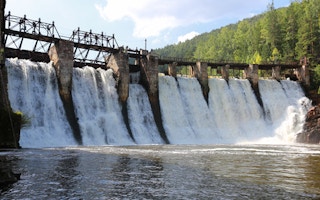A new report on water insecurity says floods and drought amid climate change and a lack of investment in reliable water supplies is weighing on the global economy by tens of billions of dollars a year.
“Water is productive and it can be destructive,” David Grey, an Oxford professor, said in video remarks.
According to the report from the University of Oxford published at the start of the World Water Forum in Korea, South Asia has the largest concentration of water-related risks. East and Southeast Asia face rapidly increasing flood threats while the United States has the greatest exposure to flood risk.
The report comes as California cities endure water use restrictions due to its historic drought, the Atacama region of Chile suffered the most flood damage in 80 years and Brazil’s largest city is sapped by its worst drought in eight decades. Iran meanwhile is short of water as water-supply shortages cause production issues from South Africa to Taiwan.
“
Our analysis shows that the countries that depend on agriculture for their economies are often the worst affected by floods or water scarcity.
David Grey, Oxford professor and co-author of “Securing Water, Sustaining Growth”
Sub-Saharan Africa is the only region where the risks of inadequate water supply and sanitation are rising, it said, while North Africa has the greatest percentage of population at risk of water scarcity.
Water insecurity costs the global economy almost $500 billion a year, according to the report, with urban property flood damage about $120 billion annually.
“Securing Water, Sustaining Growth,” published Monday, was written by a task force established by the Global Water Partnership and Organization for Economic Cooperation and Development of academics, researchers and practitioners led by Jim Hall and Grey from Oxford.
Worst affected
“Our analysis shows that the countries that depend on agriculture for their economies are often the worst affected by floods or water scarcity,” co-author Grey said. Nations need to think “about how they can diversify from an agriculturally focused economy to one less dependent on water.”
In agriculture, water insecurity is estimated to cost existing irrigators $94 billion a year, according to GWP. Countries should focus “on how better use can be made of the limited water supplies available to them,” Grey said.
“In Australia, you have a very good example of how they dealt with the 10-year drought in the Murray-Darling Basin,” World Water Council President Benadito Braga said in a phone interview last week.
Investment in water infrastructure is under-developed with more needed globally, Braga said. “Water is the common thread that connects economy, society and environment.”








